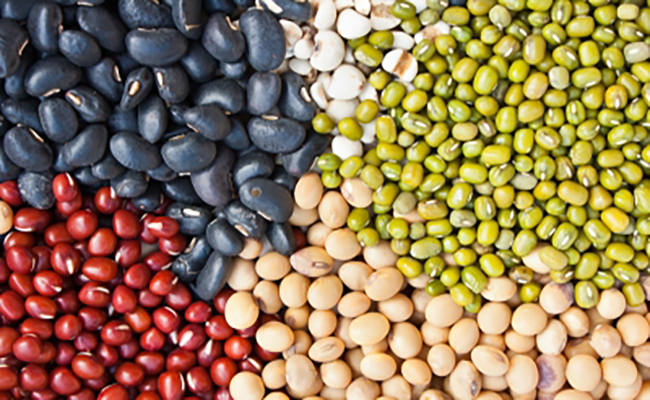Food Matters – The Documentary
 I finally had an opportunity to watch the documentary Food Matters.
I finally had an opportunity to watch the documentary Food Matters.
If you haven’t had a chance to view this documentary I strongly encourage you to make time. It’s a little over an hour in length. Here’s a link to where you can learn more – http://foodmatters.tv
Let me give you a little breakdown and what Food Matters covers.
The bottom line is “you are what you eat” and this documentary drills that point home. If you want to live healthy and disease free you must fuel your body accordingly.
Food Matters cuts back and forth between expert interviews with leading nutritionists, naturopaths, scientists, medical doctors, and medical journalists. These individuals share the knowledge regarding medical research (specifically what is found in research and what is actually shared with the public) along with what they’ve seen in practice working with patients.
Key points discussed include:
Lower Cholesterol with 3 Diet Shifts
 Dietary changes can result in lower cholesterol levels. By making dietary changes to promote lower cholesterol levels you’ll be able to work with your doctor to gradually wean off medication and eliminate negative medication side effects. And the diet changes don’t have to be hard!
Dietary changes can result in lower cholesterol levels. By making dietary changes to promote lower cholesterol levels you’ll be able to work with your doctor to gradually wean off medication and eliminate negative medication side effects. And the diet changes don’t have to be hard!
Here are three examples of simple diet shifts that will promote a lower cholesterol.
Diet Shift #1 – Replace eggs & bacon with oatmeal & fruit.
If your standard breakfast consists of cholesterol laden fried eggs and a side of fat (okay, bacon) swap this out for a bowl of oatmeal topped with fresh berries and ground flaxseed. The whole grain oatmeal will promote lower cholesterol levels, blood sugar control, and help you feel full longer. Antioxidant rich berries will help reduce the oxidation of LDL cholesterol that leads to plaque build up, while flaxseed is a rich source of heart healthy omega 3 fatty acids.
High Blood Pressure and Dehydration
 When you think about water and blood pressure the link between dehydration and low blood pressure probably comes to mind. Dehydration is a potential cause of low blood pressure due to resulting decreased blood volume leading to reduced pressure against artery walls.
When you think about water and blood pressure the link between dehydration and low blood pressure probably comes to mind. Dehydration is a potential cause of low blood pressure due to resulting decreased blood volume leading to reduced pressure against artery walls.
However, did you know not drinking enough water can lead to high blood pressure?
When you do not drink adequate water the body will compensate by retaining sodium. That should be a red flag. Sodium is directly related to high blood pressure.
While this sodium retention takes place, the persistent dehydration will lead the body to gradually ‘close’ some of the capillary beds. This leads to increased pressure places on arteries and a rise in blood pressure.
Here are three steps you can take to prevent high blood pressure that is caused by dehydration.
Metabolic Syndrome Bigger Problem for Heart Disease Than Obesity
 A study published in the Journal of the American College of Cardiology has found individuals with a healthy weight and metabolic syndrome are at increased risk of heart failure when compared to overweight individuals that are metabolically healthy.
A study published in the Journal of the American College of Cardiology has found individuals with a healthy weight and metabolic syndrome are at increased risk of heart failure when compared to overweight individuals that are metabolically healthy.
Metabolic Syndrome
Metabolic syndrome is the name given to a group of risk factors that increase your risk for heart disease, diabetes, and stroke.
Here are the five conditions considered risk factors for metabolic syndrome:
Continue reading
What equals 25 – 35 grams of dietary fiber?

I recently had an individual email me the following question:
How much fiber do I need to eat to equal 25 grams? How many pieces of fruit, slices of bread, cups of barley or flaxseed? I can’t relate to 25 grams.
I want to share the answer with everyone. Read on. . .
How Much Dietary Fiber
You need to consume between 25-35 grams of dietary fiber daily. Of this, soluble fiber should make up 15 grams. For every 1-2 grams of daily soluble fiber intake, LDL (bad) cholesterol is lowered 1%.
The average US dietary fiber intake is 12-18 grams/day. If your current diet is very low in dietary fiber, do not increase to 35 grams overnight. A sudden increase will result in gastrointestinal (stomach) distress and unpleasant side effects (flatulence and diarrhea). You want to increase your intake gradually.
Top 5 Foods Containing Dietary Fiber
Weight Loss Gifts Giveaway Offers Best Selection of FREE Health and Wellness Related Products, Services & Memberships
I wanted to let you know today about a Weight Loss site that will allow you to download a ton of weight loss-related gifts. And the best part is that it is absolutely FREE!
If you’ve had enough of plodding along year after year and you want to improve yourself and your health to make this your BEST ever year, then you need to go here: http://weightlossgiftsgiveaway.com/go/114
The Weight Loss Gifts Giveaway will be open only for a VERY LIMITED TIME from October 6th to October 27th, 2011. When you go there you’ll find a multitude of products – all FREE – provided by Weight Loss experts from all over the world. Here is just a small sample of what you will find:




